Powell speech takes center stage in Tuesday’s economic events
Introduction & Market Context
Desert Control AS (OB:DSRT) presented its Q1 2025 earnings on May 12, revealing modest revenue growth that fell significantly short of market expectations. The company’s stock has declined 0.66% to 6.08 NOK following the presentation, continuing a downward trend that saw a 10.79% drop after the initial earnings release.
The company, which specializes in climate-smart soil enhancement technology to combat desertification and improve water efficiency, operates in what it identifies as a $100+ billion water and soil tech market. Under new CEO James Thomas, Desert Control is pursuing expansion in the United States and Middle East while developing next-generation production systems for its Liquid Natural Clay (LNC) technology.
As shown in the following slide outlining the company’s market opportunity and expansion strategy:

Quarterly Performance Highlights
Desert Control reported Q1 2025 revenue of NOK 1.59 million, representing a 26.2% increase from NOK 1.26 million in Q1 2024. However, this fell well short of the forecasted NOK 3 million (approximately USD 3 million) that analysts had expected. The revenue comprised NOK 1.52 million from LNC sales and NOK 0.07 million from licensing royalties.
Despite missing revenue targets, the company highlighted several commercial achievements during the quarter. In the United States, Desert Control secured a multi-year deal with Woodland Hills Country Club in California just six weeks after completing a pilot project. The company also completed its largest application to date at Oasis Dates in California, treating over 160 acres and 9,000+ Medjool date trees.
In the Middle East, the company reported continued momentum with new commercial projects secured by partners, including at Masdar City and Trump International Golf Club in Dubai.
The following slide provides an overview of Q1 2025 regional highlights:
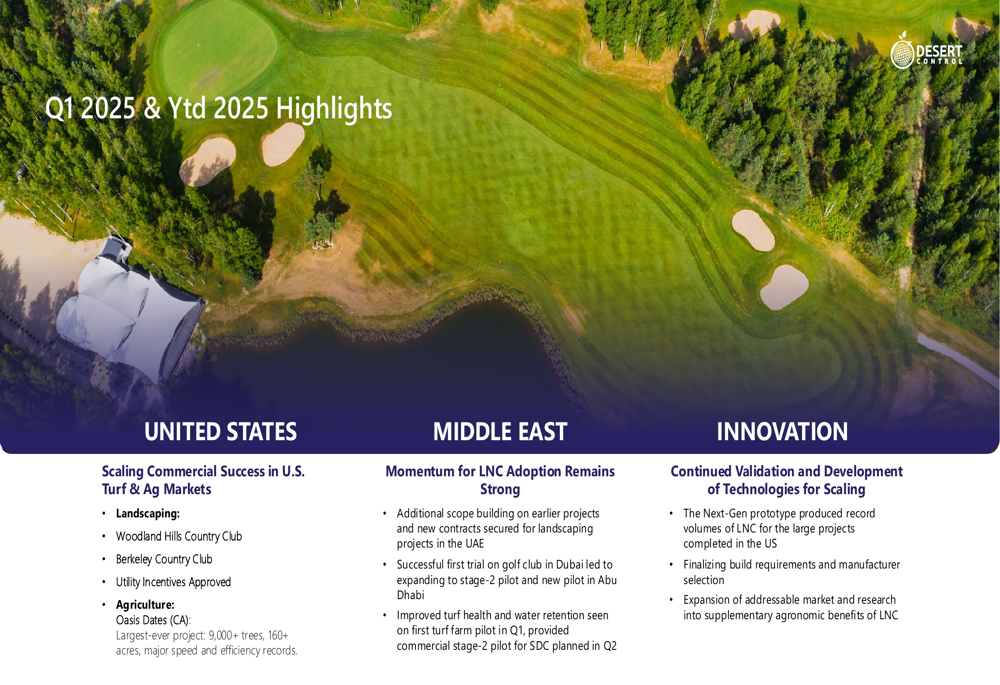
A significant development was the approval of Desert Control’s solution for water conservation incentive programs from the Metropolitan Water District of Southern California and Los Angeles Department of Water and Power. These programs can cover up to 50% of total installed costs through rebates based on verified water savings, potentially accelerating adoption in California markets.
The incentive approval is detailed in this slide:
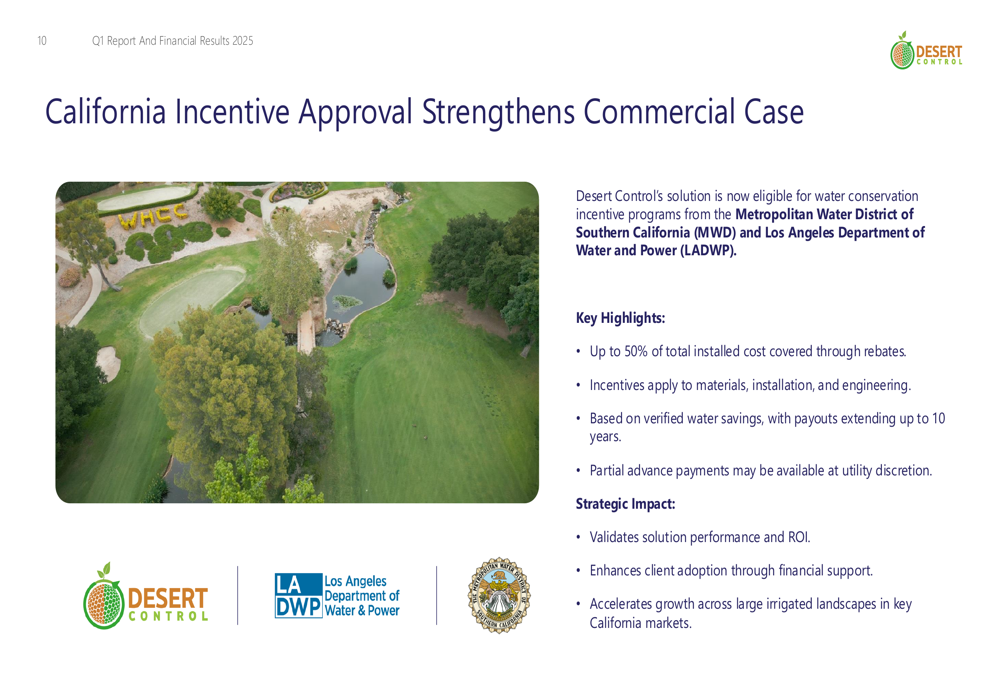
Financial Analysis
Desert Control’s financial results revealed several challenges beneath the surface of its commercial progress. The company reported an EBITDA of NOK -15.05 million for Q1 2025, slightly worse than the NOK -14.73 million in Q1 2024. The net loss for the period widened significantly to NOK -22.02 million, compared to NOK -7.92 million in the same period last year.
The company’s cash position continued to deteriorate, with total cash balance falling to NOK 43.31 million at the end of Q1 2025, down from NOK 105.13 million a year earlier. At the current burn rate, this gives Desert Control a runway extending into late Q3 2025.
Despite these challenges, the company maintains a strong balance sheet with an equity ratio of 89.4% and no interest-bearing debt. According to available market data, Desert Control maintains gross profit margins of 87.57% and a current ratio of 10.54, indicating robust operational efficiency and solid short-term liquidity.
The following financial summary highlights key metrics:

Strategic Initiatives & Technology Development
Desert Control is advancing its "pay-as-you-save" business model, which generates monthly recurring revenue based on verified water savings. The company presented a case study of Berkeley Country Club, where the potential contract value exceeds NOK 6 million over an initial five-year period, with revenue tied to irrigation reduction percentages.
This business model is explained in the following slide:
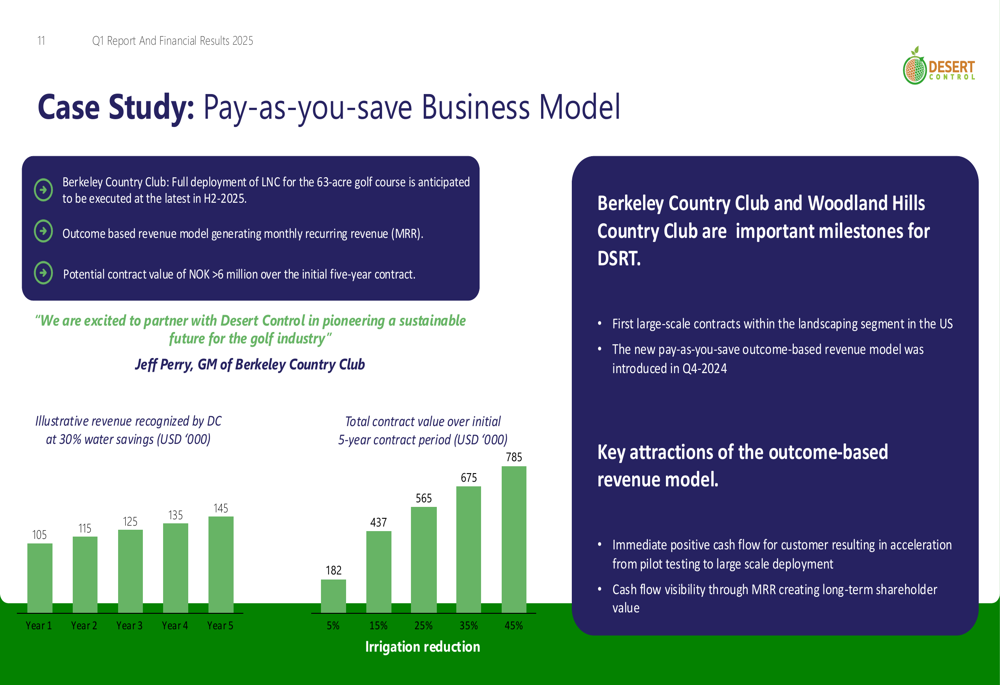
A cornerstone of Desert Control’s strategy is the rapid advancement of its LNC production technology. The company is on track to increase production capacity from the current 15,000 liters per hour to 120,000 liters per hour in the first half of 2025, representing a 1000x capacity increase since 2019. This technological leap is expected to dramatically reduce application time for large projects, from 4 weeks to 4 days for a 50-hectare area.
The technology development roadmap is illustrated here:
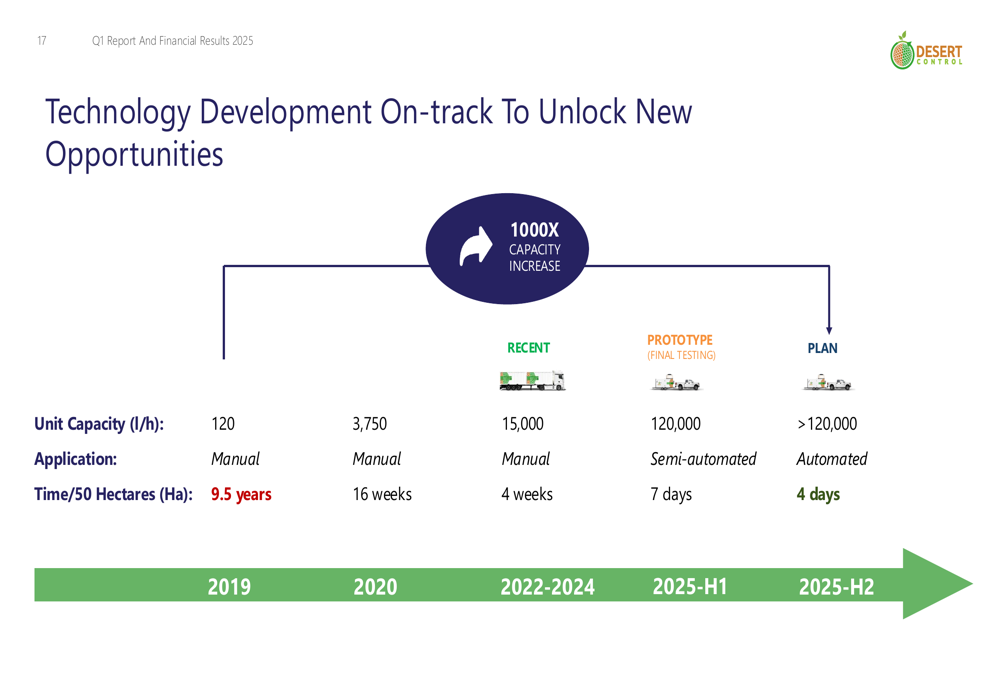
The company is also expanding its impact through partnerships, including with the United Nations World Food Program in Iraq. This initiative aims to develop a blueprint for drought response and land restoration, with 4,000 olive and pistachio trees to be treated with LNC technology.
Forward-Looking Statements
Despite the revenue shortfall in Q1, CEO James Thomas maintained an optimistic outlook, projecting that Desert Control will grow its contracted revenues "more than tenfold in 2025" compared to 2024. This ambitious target would require significant acceleration in the coming quarters.
The company’s strategic priorities for 2025 focus on four key areas: expanding in U.S. golf and landscaping markets, scaling deployments in high-value U.S. agricultural crops, growing licensing revenues in the Middle East, and commercially launching the next-generation production system.
As detailed in the outlook slide:

However, investors should approach these projections with caution given the significant gap between Q1 performance and full-year targets. The company’s current market capitalization of approximately $35.23 million and year-to-date returns of 29.43% suggest that investors still see long-term potential despite the near-term execution challenges.
CEO James Thomas, who joined the board in 2023 and is the company’s largest shareholder with a 9.8% stake through Woods End Interests LLC, emphasized the company’s strategic focus during the earnings call, stating: "We have too much to do to be perfectly straightforward." He also highlighted the versatility of the company’s core technology, noting: "LNC will turn out to be a technology that works very well on its own, but is additive."
With its current status and achievements in technology development and commercial traction, Desert Control faces the challenge of translating promising pilots and partnerships into sustainable revenue growth while managing its diminishing cash reserves.
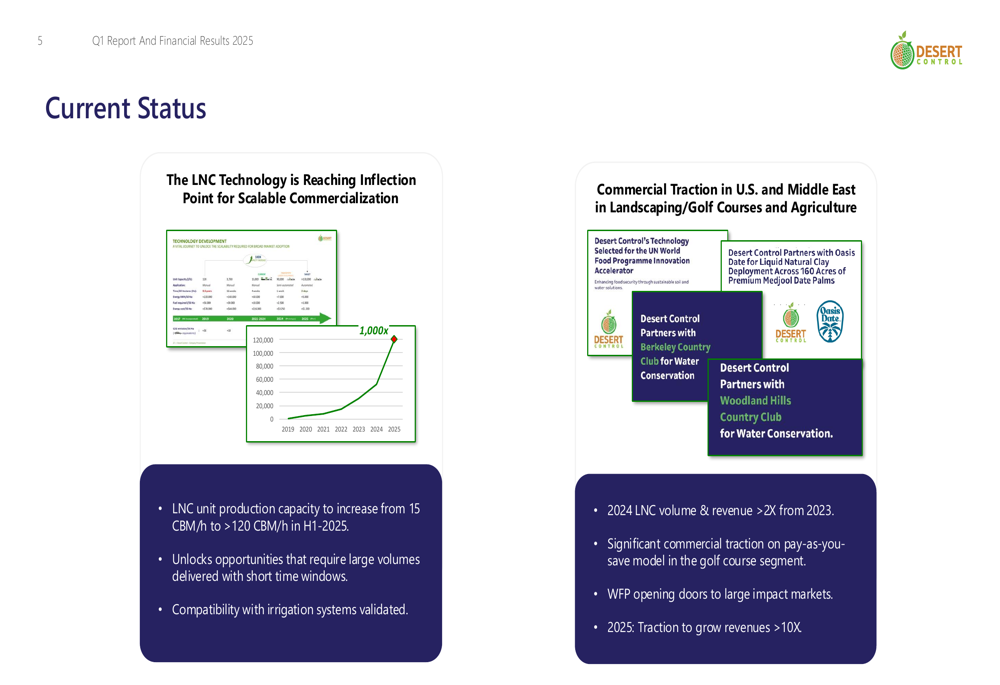
Full presentation:
This article was generated with the support of AI and reviewed by an editor. For more information see our T&C.
